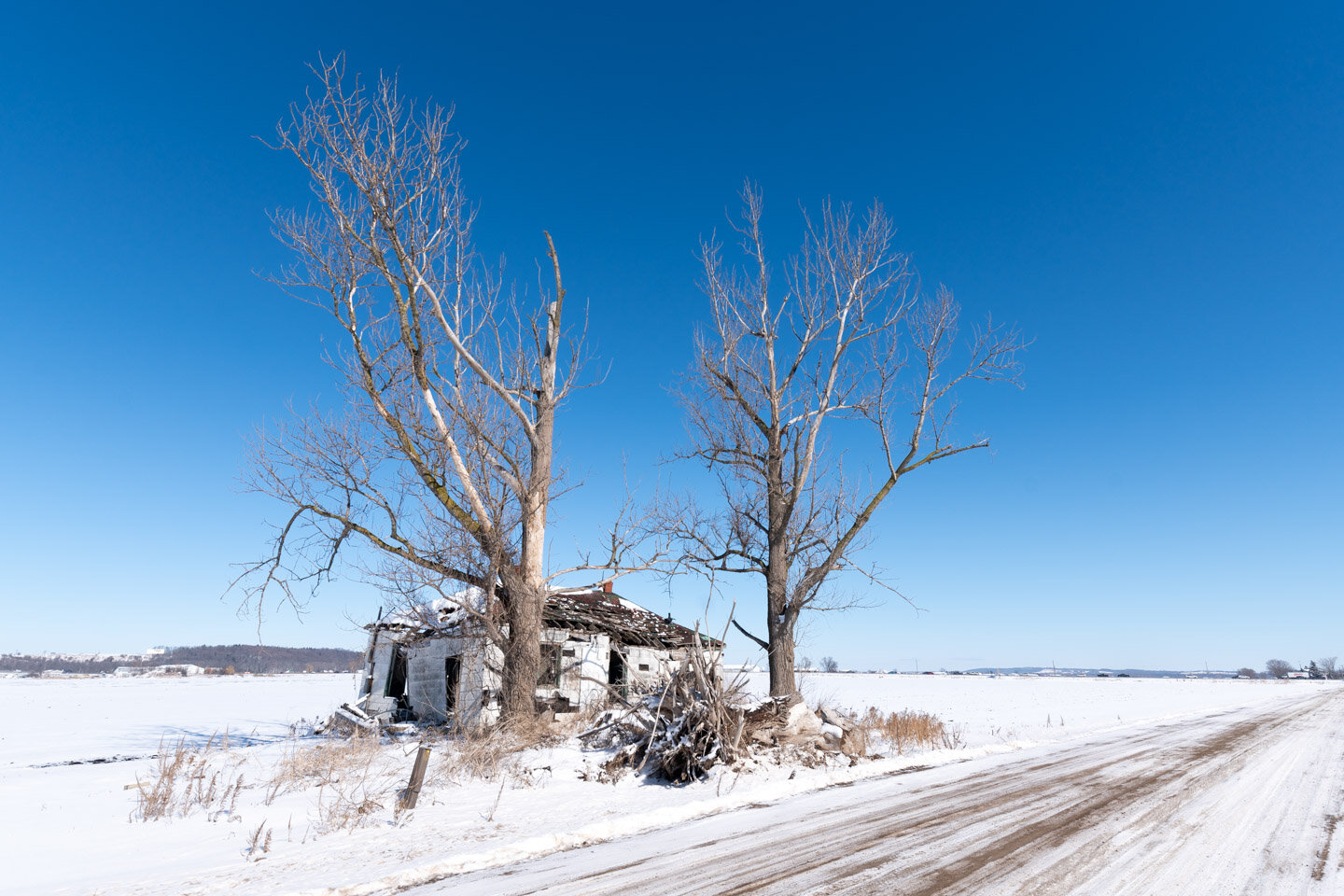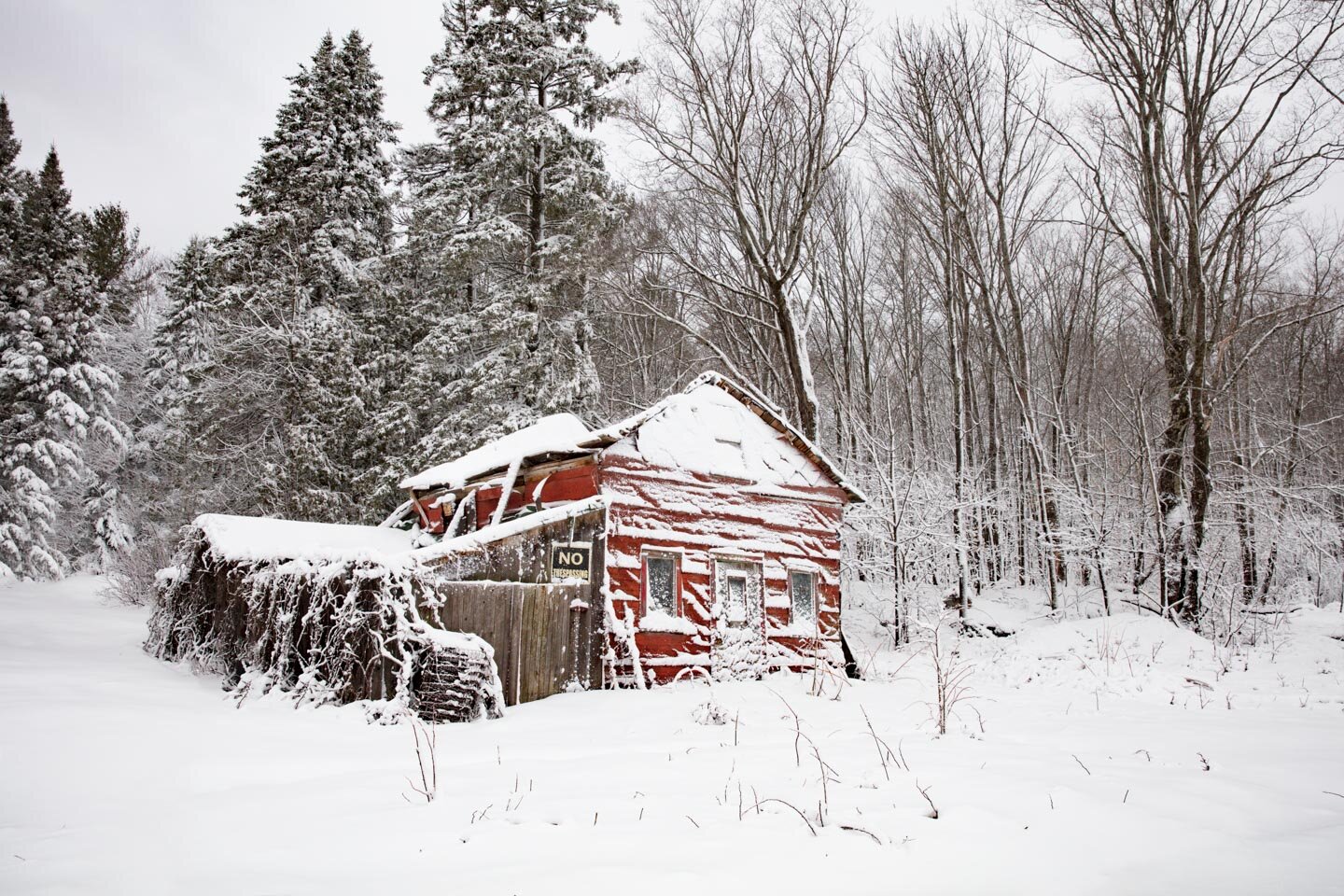Traces of Settlement Artist’s Statement
Between 1825 and 1850, a wave of nearly a million British immigrants, mostly refugees, fleeing clearances and famine, from Scotland and Ireland, flooded southern Ontario. These industrious people chopped down trees, created small farms and built mills, dams, roads, canals, and railways. For the next 100 years, the descendants of these settlers waged a constant battle to tame nature and eke out a living. In the lush farmlands of the south, they largely succeeded. On the Canadian shield, they slowly gave up due to the rocky, unproductive terrain.
In the second half of the twentieth century, the economy of the province shifted drastically. Urbanization took hold and people left their farms and moved to the city. The forests were stripped of the valuable first growth and what was left of the logging industry became mechanized. Mills and other industries shifted to the south. The railways stopped running, and the rails were turned into razor blades.
As you drive through southern Ontario today, there are traces of the first wave of settlement nearly everywhere you look. There are old fences running through wooded areas, abandoned houses, barns falling-down, factories and mills in various states of decay and recreational trails where steam engines once ran. Look closely. The fecundity of nature quickly obscures the makings of man. In less than the human life span trees grow up through concrete and stone, walls collapse, and variety proliferates.













